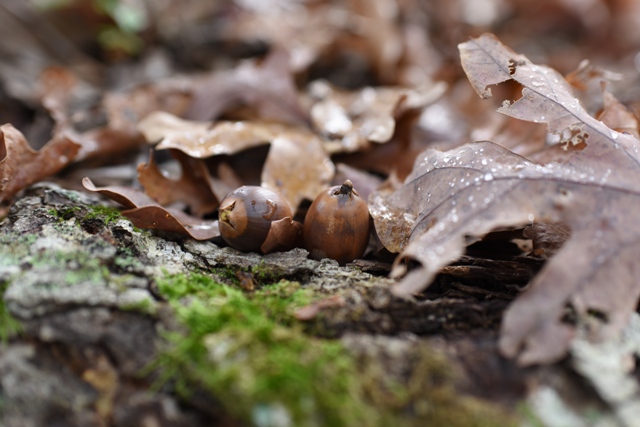When Acorns Have Gone Bad
Filed under: Deer Hunting, Hunting Blog
White-tailed deer have been eating acorns since both deer and acorns existed. Acorns are a huge amount of a deer’s diet, but there are different variables that can help you determine what type of acorn is the preferred food source. Knowing the time of year, previous rainfall, and daily temperatures can all play into making you a successful hunter this fall.

Deer usually do not consume sprouting acorns.
Hunting acorns is a huge part of our hunting strategy here at The Proving Grounds. Grant and I spend a lot of time talking about acorns, scouting for them, observing feeding habits of other animals, and trying to understand the acorn status for our current hunting situation. Late this summer we realized that most of our oak trees had a high amount of acorns. This included both red oaks and white oaks. You can hear Grant discuss the difference in episode #139, Antlers at Dusk. In summary of that episode, we generally hunt white oaks during the early to mid season and focus more on red oaks during the late season. White oak acorns aren’t as “hardy” as red oak acorns, so during years with lots of rain and warmer temperatures acorns that have already fallen tend to start sprouting or spoil. This “spoiling” will cause the deer to stop feeding on them as heavily and the deer will transition to another food source.
What is that other food source? That could be a green food plot, soybeans, a corn field, or another area of acorns. This past week I started noticing a transition of squirrels feeding on typical White Oak acorns to post oak acorns, which are also in the white oak family, but from a different variety of tree. Post oak acorns are generally smaller and harder than a typical White Oak acorn, but the deer still love them. In southern Missouri the post oak acorns tend to fall slightly later than the typical White Oak acorns so we’ll be keeping a close eye on the post oak trees. If post oak acorns become the main food source, it will not only shift our hunting strategy, but also change which areas we hunt the most.
Knowing the preferred food source is critical to hunting success. By finding the main food source, especially this time of year, we find the does, which also means finding those rut-crazed bucks!
Get out this week and enjoy this beautiful time of year!
Daydreaming of Whitetails,
Adam



